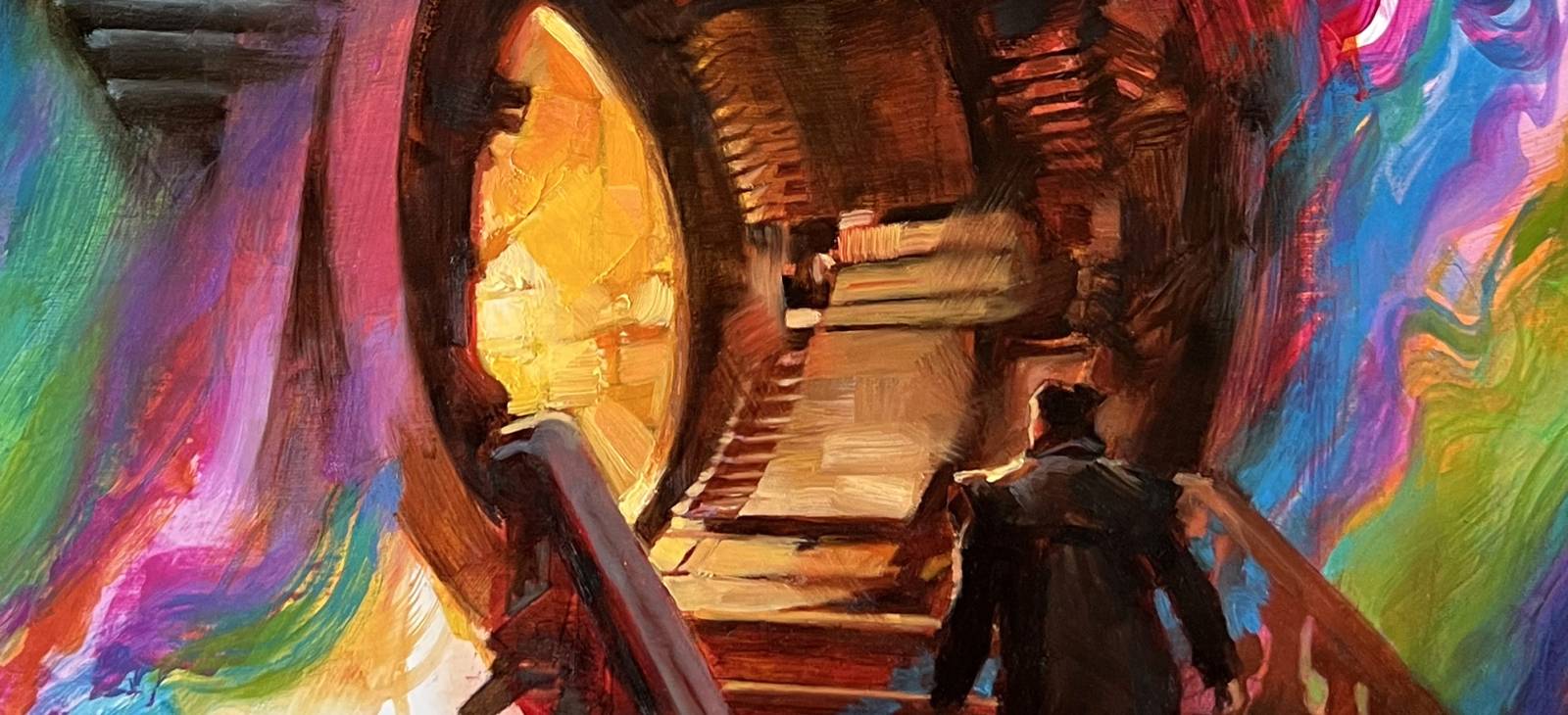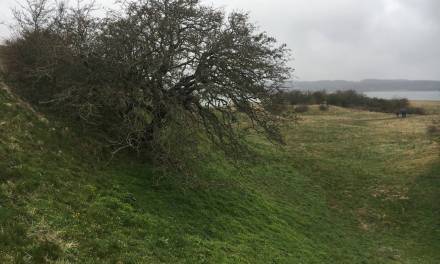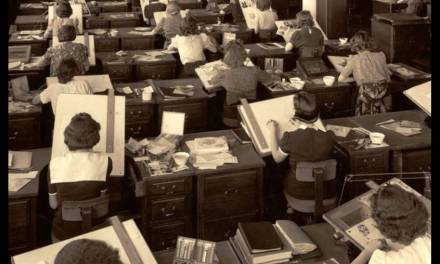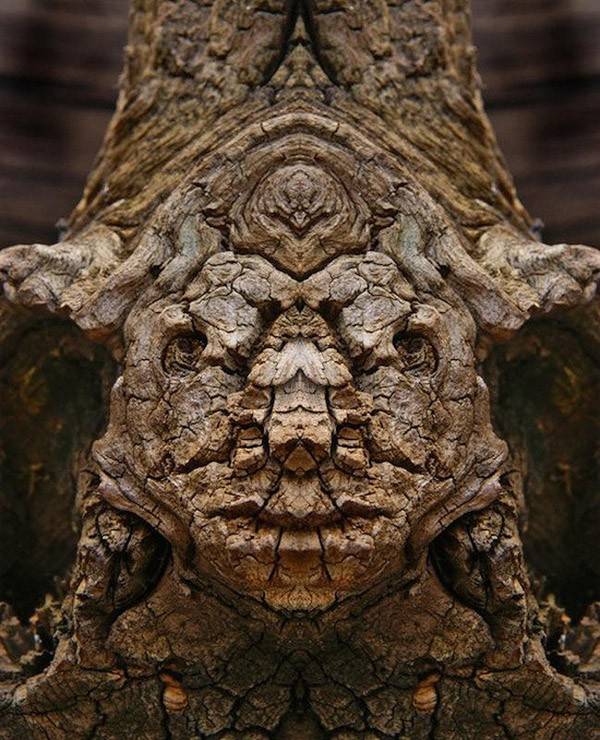I’m often asked by students how to get ideas and what keeps me excited and stimulated to do my work. This has often bothered me because my answers weren’t a step-by-step process they could count on. Even though I understood how I create images, I needed to find answers for them that were more universal. In my research to find those answers I discovered how the process of creation is inherent in all of us.
I remember in art school that instructors kept saying that we have to be more creative. “To be a better artist, you have to be more creative.” Oh great, guys. You want to explain how you go about that? They couldn’t. It was if they were saying one has to think better thoughts to get better thoughts. What the— what?
It was no surprise. They assumed creativity fell from the skies on us, and hadn’t spent time looking into what allows us to create in the first place. To be fair, though, the research into how our brain gains insights and makes connections was still in its early stages.
We have to learn to think creatively. While it’s natural, it’s not obvious. But there are patterns and methods we can learn to recognize and develop.
One thing is certain: the process of ‘being creative’ is convoluted and chaotic. If you put it on a graph, it might look like the stock market’s ups and downs, as it struggles upward.
But you already know this. You’ve already experienced this in many ways when creating your work. You’ve touched on the process without really understanding how it works, whether it’s actually a process or just you stumbling around, looking for ideas and inspiration.
I know this because I’ve stumbled through it, too. But once I started researching what neuroscientists have been studying, I began to trust the process. Realizing that talent is a verb, not a noun, not a thing you get but a thing you build, my work improved exponentially.
It’s fascinating. There are many studies now providing incredible insight into how we come up with stuff. You don’t have to be naturally different to come up with ideas and visions. You don’t have to be strangely unique or twisted to be creative.
You are already unique. You are already creative. It comes with the package. You just have to set it alight.
Creating is messy.
It’s not a step-by-step process. It’s convoluted, jumbled, chaotic. Your initial ideas are fuzzy, vague, and awkward. Get used to it. That’s how they all start. Sure, sometimes things pop into mind quite clearly, but usually because the brain has been working on it in the background without your conscious awareness. The seed was planted a while ago.
Get your idea onto the paper early, no matter how fuzzy or awkward. That’s your intuition wanting to get out. Let it.
Sometimes, we don’t even realize that an early idea was actually the right idea until we’ve struggled a bit with other ideas. We come back around to the initial idea because we’ve explored other alternatives that proved fruitless. But were they? The process needs this exploration in order to know that the first inclination was fairly close.
In other words, we have to research our ideas and progress our ideas, to let them simmer and stew. Get your idea onto the paper early, no matter how fuzzy or awkward. That’s your intuition wanting to get out. Let it.
Ignition
A spark of an idea can come from anywhere, anytime, but you want to be alert to it. It doesn’t take much to fire the brain (see: curiosity, below) if you’re attuned to watching.
Some sparks sit in us for years, coming from a past problem or an incident that occurred long ago, even from childhood. Called a “crystallizing experience,” it can be a motivating experience that initiates your passion, even for a single painting.
Rage to master
While most of us creatives have brains that are not only willing but able to come up with ideas to explore, the difference between our success and failure can be the fire in the belly. The “rage to master,” as developmental psychologist, Ellen Winner calls it. A sustained drive for excellence. I love this. Our initial sparks can lead to that fire.
Sensitive
Many of us artists have grown up as sensitive individuals. We paid attention to things the other kids around us weren’t interested in, or maybe just didn’t care about. Were you the kid in school that drew their way through grade school and high school? I was.
Creative individuals are more attentive to details and patterns. This sensitivity is about being more receptive to your surroundings and paying attention to the environment, which in turn nourishes creativity. Even with the relationships around you. As artists, this is a natural state of being. But it can be learned and enhanced.
It’s something you want to keep the rest of your life.
Dopamine
I kid my students that I’m addicted to dopamine. When we create something, we get a familiar feeling of satisfaction. That’s dopamine flushing your system, helping the brain to remember the condition, the success. Neuroscientists have discovered that even by just thinking of an idea can give you a little jolt of dopamine to help you continue on to complete the idea. The first hit’s free.
Daydreaming
Do you get ideas in the shower? Or maybe in other places, say, while walking, running, bathing, or washing dishes? This is because your conscious mind is switched to neutral while your subconscious is amped up. It’s been working in the background, while you weren’t paying attention. But once the conscious mind calms, we can let that intuitive mind step forward while it accesses all of our brain to find solutions.
The brain loves to do this. Our problem is allowing it to do this more often. As artists, it’s not only helpful, it’s necessary.
Meditation
The usual image of meditation is of someone sitting cross-legged, or in seiza, focusing their mind to be…unfocused. But there are other ways to allow for more openness to occur. Walking has shown to improve our ability to turn off the distractions and allow for daydreaming. This is where we make odd connections and new combinations and those in turn can stimulate the conscious mind to express.
I’ve often told my students to be 100% focused when working, whether on thumbnails or a finished painting. What I mean by that is to be attune to the now. This moment. To live this moment as though it really matters. Being mindful of what you are doing as you work. Not to get “lost in the details” and render absentmindedly.
But before you get to those moments of concentration and focus, it’s good to spend time letting your mind wander. Open-monitoring meditation gently encourages your brain to explore and play, finding multiple solutions to a single problem.
Solitude
In order to quiet the distractions of everyday life, or to simply escape our mental chatter engaged in constant communication (I’m looking at you, internet and phone), we need to isolate ourselves. Getting away, holing up, and becoming a hermit for awhile isn’t the weirdo thing so many critics want to make of it. You’re not a kook for wanting to isolate yourself from the frenetic world around us.
More studies (so many studies!) show that this is conducive to the creative process. And I know from experience that painting alone is important to my expression on canvas. Look into the creative processes of other artists, writers, filmmakers, musicians, and sculptors, and you’ll find how much they talk about separating from the outer world.
Visualize success
More studies (again?) show that basking in future success decreases motivation. It’s not just about picturing yourself happy and successful. You have to picture yourself conquering all the problems that will inevitably come while working to achieve it. That way, when they do arrive, and they will, you’ll be ready to answer them and keep moving. Visualize the problems you’ll have to conquer in your next painting.
To keep moving is the key. Just seeing the success is kind of a dead end. But picturing an evolving success, while overcoming failures, is much more productive. And enjoyable. Dopamine hits galore.
Most geniuses do not produce one good idea after the other. Many of their ideas are total failures. What makes them great is their productivity.
Risk failure
Pretty basic: success encompasses failures. Or did you think that all successes are a 1-2-3 step process to happiness? Far, far from it. The failures are almost the exciting part of success, if it weren’t for the fact that they’re so debilitating.
But only if you let them be. If you know you have to have them in order to create, to progress, and to succeed, then that takes the sting out of it a bit.
(First lesson in facing failure: be a bad-news-first person. The good news is the salve for the bad. Getting the good news first is just avoidance.)
Risk the dumb ideas. They’re not dumb if you’re willing to explore all angles. Risk asking yourself, “what if?” when you draw. Whatever you get is important to your process of discovery.
When Picasso got an assignment to paint a mural for the Spanish Pavilion at the 1937 World’s Fair, he stewed for several months before he was inspired to paint Guernica. He had trouble developing the bull in the painting, drawing and redrawing to find what worked. Many authors write about his struggles with the mural and label them ‘failures’ until he later magically “discovered” what he wanted.
In fact, he needed to travel through those explorations because they were the small failures that allowed him to build the image he wanted. The failures were the successes!
Most geniuses do not produce one good idea after the other. Many of their ideas are total failures. What makes them great is their productivity.
Curiosity
The big one. This is another condition you must build and use for the rest of your life. For an artist, curiosity is your mainstay. Curiosity is your north star. Curiosity is what leads you, and brings you to your ideas, images, and successes.
If you are bored, it’s not the object or thing you’re bored with. It’s you. It takes nothing to get un-bored though. Curiosity is your way out and your way back in. Simply ask “why?” like you did as a kid. We lose this precious questioning as we age. Artists rekindle that fascination and communicate with it.
I’ve accessed many books in my research for this post, but here is a short list of ones you’ll easily absorb and be inspired by:
Mindset, Carol Dweck
Curious, Ian Leslie
Wired To Create, Scott Barry Kaufman & Carolyn Gregoire
Why?, Mario Livio







When I create, I always challenge myself to go further than I did on the last painting and the best part of being creative is being in the moment, your mind is free of all the outside noise and that’s when I feel I’m happiest.
Thank you for another wonderful article Greg! 🙂
Thanks, Brian! In some of the worst times of my life, while facing personal tragedy or financial loss, I could always find solace in my work. It always helped to keep me in the now, in the moment, and as long as I could do that, no one could take me down, or take it away. I think we all can experience that strength from our work.